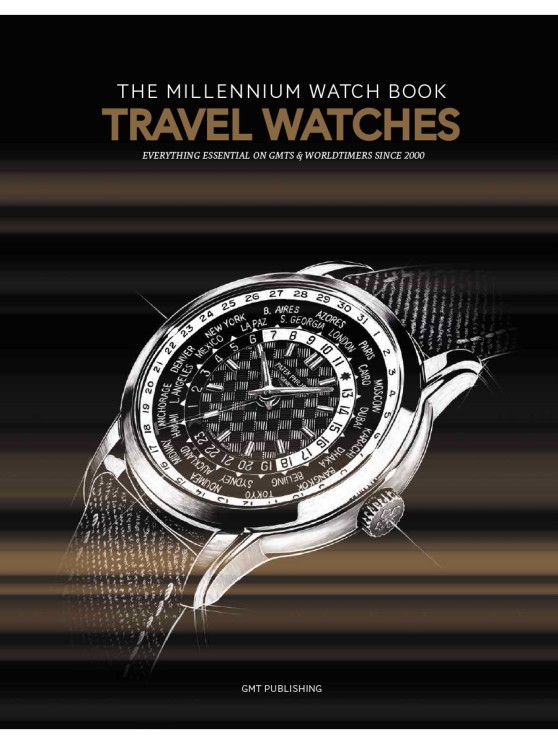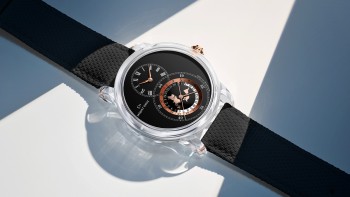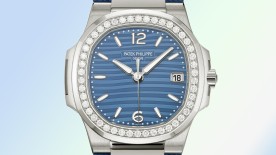Pierre Jaquet-Droz (1721-1790) was a tireless traveller, journeying in person to present his automatons and clocks to the royal courts of China, Spain and Russia. In his day, long ocean-going voyages were still relatively rare and the concept of time zones had yet to emerge, but that didn’t stop the brand that now bears his name drawing inspiration from his wanderlust to develop its Grande Seconde Dual Time in 2016.
It comes as little surprise that this timepiece features Jaquet-Droz’s signature layout, a large figure-of-eight format that dates back to the founder himself and around which the brand has gone on to build up its distinctive style – although it has to be said that using it for a dual time watch is something of a challenge. The Grande Seconde is distinguished less by its contents than by how it manages bare surfaces and wide-open spaces in its visual design; its character resides in its minimalist, pared-down appearance rather than the visible features themselves. The challenge was to add a second hours hand and a date without watering down the large seconds display (which is after all the defining characteristic of the collection in question) or cluttering up a historic, elegant and perfectly balanced layout.
To add these functions, Jaquet Droz’s design team thus decided to use the lower half of the figure-of-eight where there was the most available space. Here, two hands have been added alongside the majestic large seconds hand, along with a separate hours hand and a red-tipped date hand accompanied by a matching red figure 31.
Alternating font and number styles are another core aspect of Jaquet Droz style vocabulary: local time is displayed in the top half of the figure-of-eight in Roman numerals (an unwavering characteristic of Grande Seconde models) while home time is shown on the lower half using Arabic numerals. The beauty of this feat is especially visible where the two circles meet, with the numerals for 5, 6 and 7 o’clock giving way to the ‘60’ and ‘31’ markings; this rare masterpiece is indeed a case study in design. The Roman numeral for four is written as ‘IIII’ rather than the customary ‘IV’ so as to provide a more pleasing balance with the VIII situated opposite – the design equivalent of a chef’s kiss.
On its release in 2016, the Grande Seconde Dual Time was available in three 43mm-diameter versions: with an ivory Grand FEu enamel dial and a red gold case or with a silver-toned or onyx opaline dial in a steel case. The timepiece was updated in 2019 with the addition of a laser-cut world map in the centre of the GMT module on a white or black dial housed in a red gold or steel case.
None of these versions are manufactured today; Jaquet Droz is now focusing solely on bespoke pieces with a strong emphasis on sapphire crystal cases and a wide range of customisation options encompassing screws, hour-markers, hands and the strap. Result? Henceforth, you can travel the world safe in the knowledge that you’ll never bump into somebody else wearing the same Grande Seconde Dual Time as you.
Jaquet Droz Grande Seconde Dual Time
Case: red gold or steel
Dimensions: 43mm
Movement: self-winding mechanical Caliibre 2663H24, silicon balance spring and anchor lugs, double barrel, 42 jewels, 65-hour power reserve
Functions: hours, minutes, large seconds display, date, second time zone
Dial: Grand Feu enamel, silver-toned or onyx
Strap: hand-stitched, rolled-edge black alligator, deployment clasp.
Launch year: 2016
This year, GMT Magazine and WorldTempus have embarked on an ambitious project: summarising GMT and Worldtimer watches since 2000 in The Millennium Watch Book - Travel Watches, a beautifully laid-out coffee table book. This article is an excerpt of the book. The Millennium Watch Book - Travel Watches is available for preorder in both French and English here.






